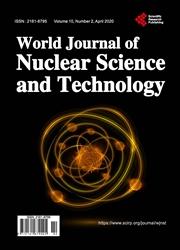Recovery of Rare Earth Elements Present in Mining Tails, by Leaching with Nitric and Hydrochloric Solutions
引用次数: 2
Abstract
The rare earth elements (REE) include the group of 15 lanthanides, scandium and yttrium and have diverse applications in technological and nuclear areas. The existence of REE in massive solid mining wastes generated in leaching processes of copper minerals in the Atacama region of Chile generates the possibility of creating added value to the treatment of this type of waste and supporting the development of a circular economy, generating a useful by-product in different industries. In order to know the behavior of these elements present in the solid carrier waste, a leaching process was carried out by using two agents separately, corresponding to hydrochloric and nitric acid. The technical feasibility to recover REE from carrier tail was demonstrated, the best leaching agent for these elements being a hydrochloric solution, obtaining a maximum recovery efficiency of 64.5%, for an acid concentration: 3M, temperature: 40°C and (liquid/solid) ratio: 4. Lanthanum and cerium present the best individual recoveries compared to the other REE, with a maximum efficiency for a hydrochloric solution of 75.7% and 70.0%, respectively. The interaction of operational parameters that most influence the REE recovery corresponds to the temperature and the (liquid/solid) ratio. After 4 hours of leaching, REE recovery efficiencies remain practically constant. Acid consumptions correspond to 11 (kg HCl/ton mining tail) and 29 (kg HNO3/ton mining tail). The highest amount recovery ratios of these elements correspond to 0.355 and 0.224 (kg REE/ton mining tail), for hydrochloric and nitric solutions, respectively. These results influence the types of reagents and parameters to be studied in the following stages of the global process.硝酸和盐酸浸出法回收尾矿中的稀土元素
稀土元素(REE)包括15种镧系元素、钪和钇,在技术和核领域有多种应用。智利阿塔卡马地区铜矿浸出过程中产生的大量固体采矿废物中存在稀土元素,因此有可能为处理这类废物创造附加值,并支持循环经济的发展,在不同工业中产生有用的副产品。为了了解这些元素在固体载体废弃物中的行为,分别使用盐酸和硝酸两种药剂进行了浸出过程。结果表明,在酸浓度为3M、温度为40℃、液固比为4的条件下,以盐酸溶液为最佳浸出剂,回收率最高可达64.5%。与其他稀土元素相比,镧和铈的回收率最高,在盐酸溶液中的最高回收率分别为75.7%和70.0%。影响稀土回收率最大的操作参数的相互作用对应于温度和(液/固)比。浸出4小时后,稀土元素的回收效率基本保持不变。酸的消耗量分别为11 (kg HCl/t尾)和29 (kg HNO3/t尾)。在盐酸溶液和硝酸溶液中,这些元素的最高回收率分别为0.355和0.224 (kg REE/t矿尾)。这些结果影响了在整个过程的后续阶段要研究的试剂和参数的类型。
本文章由计算机程序翻译,如有差异,请以英文原文为准。
求助全文
约1分钟内获得全文
求助全文

 求助内容:
求助内容: 应助结果提醒方式:
应助结果提醒方式:


